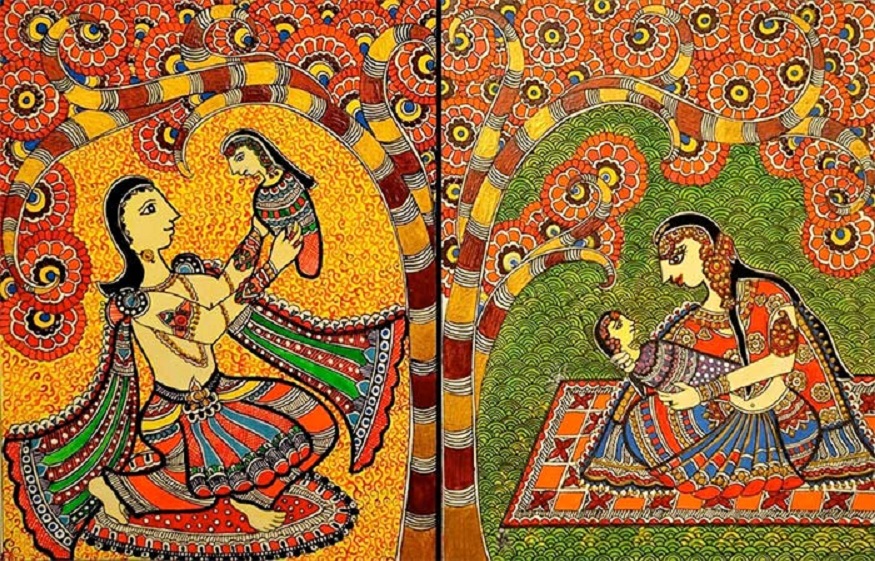The corners of our homes are adored by them while few are worshipped within the sanctum sanctorum of temples; they are diverse in nature and yet connected by the common thread of painting – spread across several states in India. The culture, heritage, and art forms in India is a reflection of the diverse nature spread across several states. It’s not only about the skill set that comes with every painting and the artists behind it but also the social, cultural, and religious sentiments which are attached to it that make it extra special – today, we’ll tell you about the 7 artforms that you must explore in India!
1. Pichwai – Hung behind the glorious idols of Lord Krishna, Pichwai painting are known for their motifs commonly associated with Lord Krishna – lotus, cows, peacocks, Radha, gopis, and Lord Krishna himself. Pichwai art started from the dainty town of Nathdwara of Udaipur, Rajasthan where these paintings done on clothes were hung behind the deity of Shrinathji, who is famously known as the seven-year-old manifestation of Lord Krishna. Done intricately, the function of this painting is suggested by its name itself – pich meaning back and wai meaning hanging
2. Madhubani – One of the most famous forms of folk painting, Madhubani art originated in the Mithila region of Bihar. This painting is rooted in religion and belief as it is believed that its history dates back to the wedding of Sita. Madhubani painting are colorful and the canvas is filled with different motifs, all of which have a significant meaning behind them. It has five distinct styles known as Kachni, Bharni, Tantrik, Godhna, and Kohbar.
3. Pattachitra – A visual treat for the eyes, Pattachitra painting are known for their story-telling skills. Originated in West Bengal and Odisha, Pattachitra art is used differently in both regions; on one hand, it is used as a cloth painting for storytelling in Bengal Pattachitra, and on the other hand, it is used as a religious object used in various customs and prayers in temples of Odisha. Originally used as a temple souvenir, Pattachitra paintings are considered time-intensive and elaborate works.
4. Gond – A canvas that isfull of dots, crosses, and lines seamlessly, blended with each other and tied together with sacred beliefs – Gond painting is known as one of the most famous forms of tribal art belonging to the Gondi people who belong to the Gond community, the largest tribal group in India. Gond art was traditionally done on floors and walls of homes to show gratitude to nature and usher in good luck.
5. Warli – If you have ever spotted an art that is done on a brick red background with white colors, then you have successfully spotted a Warli painting! A 2500 years old art, it originated in districts of Maharashtra like Talasari, Mokhada, Vikramgad, Jawhar, etc. Warli art is drawn using geometric figures which depict scenes from the daily lives of people from the North Sahyadri range of Maharashtra like hunting, farming, fishing, animals, trees, etc.
6. Tanjore – Probably one of the most expensive and bejeweled paintings, Thanjavur or Tanjore paintings started in 1600 AD in Thanjavur, Tamil Nadu. Tanjore paintings are done by using gold foils, precious jewels, and extensive gesso work; they mostly depict Hindu god and goddesses and this style of painting has been influenced by the Deccan, Maratha, and European styles of painting.
7. Kalamkari – Kalamkari style fabrics are profoundly famous amongst people for their simplicity but not many know that it has stemmed out of a painting. Kalamkari painting is literally known as ‘painting with a pen’ and has two distinct types of style – Machilipatnam and Srikalahasti from Andhra Pradesh. They were traditionally done using block prints which we now see in the form of Kalamkari fabrics.




